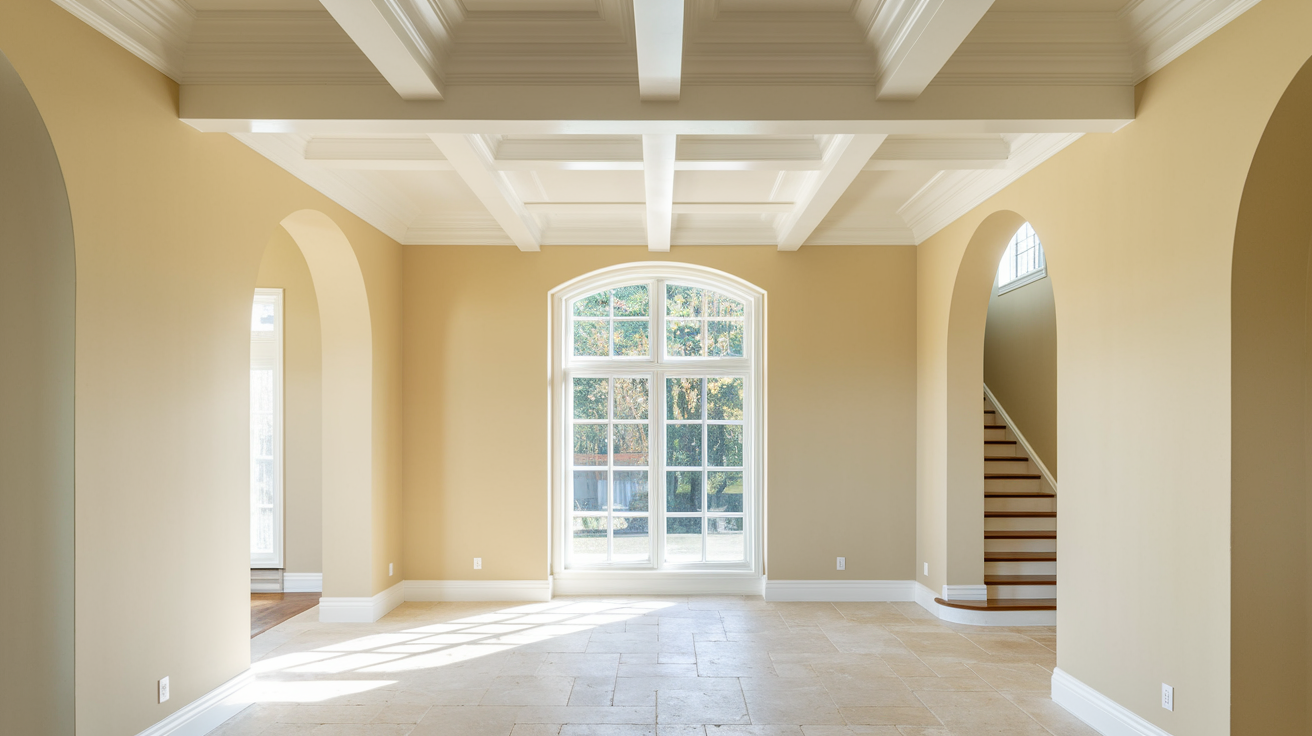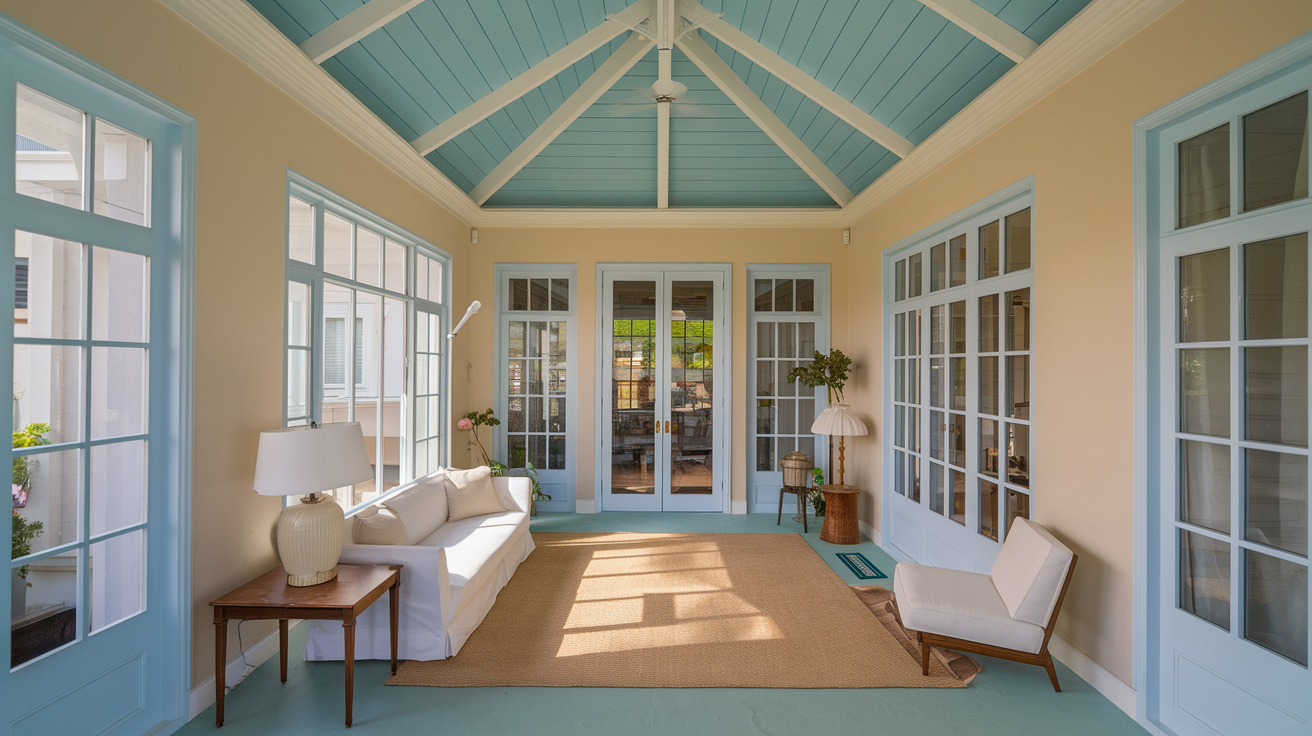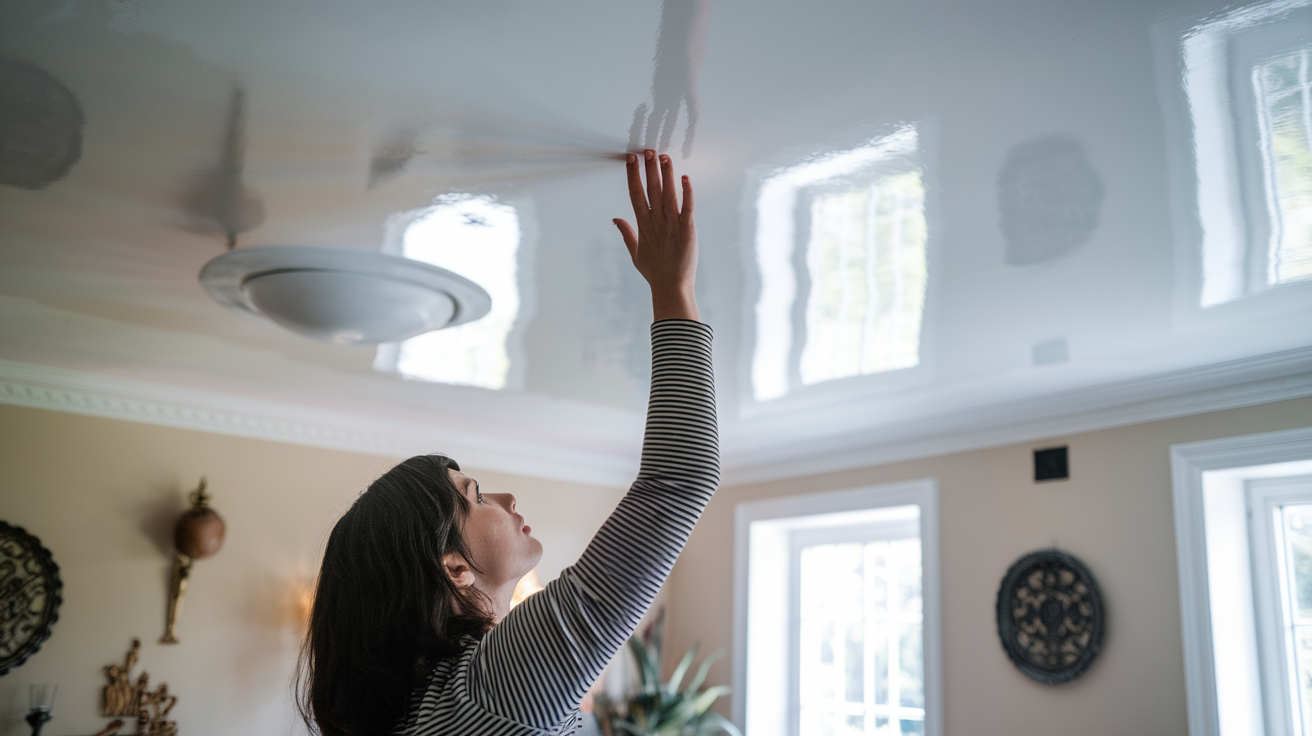Ceiling paint selection substantially affects your room’s perceived height and overall atmosphere.
Have you considered how the right ceiling color can completely change how spacious a room feels?
The perfect ceiling paint provides excellent coverage, reduces reflection, and creates visual effects that can make rooms feel taller or more intimate.
Many homeowners overlook their ceilings, focusing solely on walls, but the “fifth wall” deserves equal attention.
Quality ceiling paint can hide imperfections, resist moisture in bathrooms and kitchens, and complement your overall design scheme.
What features matter most when selecting ceiling paint for different rooms in your home? How can ceiling color impact the practical aspects of your living spaces beyond mere appearance?
How to Choose the Best Ceiling Paint for Your Home?

Finding the ideal ceiling paint requires examining several key factors unique to your space. Begin by assessing the room’s natural and artificial light sources, as these greatly influence how ceiling colors appear throughout the day.
Next, determine each room’s primary function. Living areas, kitchens, bathrooms, and bedrooms each benefit from different paint characteristics.
Always apply paint samples directly on your ceiling, examining them at various times of day under different lighting conditions.
Consider how your ceiling paint coordinates with existing wall colors, flooring materials, and architectural features.
While personal preferences should guide your decision, certain options provide greater versatility when considering potential future design changes.
White Shades for Ceiling Paint

White ceiling paint remains the conventional choice for good reason, reflecting up to 85% of available light to brighten rooms and create an impression of greater height.
However, not all whites perform identically across different spaces.
Select whites with subtle undertones—warm ivory, soft cream, or gentle gray variations—to prevent stark whites from appearing too clinical while maintaining their brightening effects.
These nuanced whites create welcoming environments even in rooms with minimal natural light.
For kitchens and bathrooms, choose moisture-resistant formulations with mold-inhibiting properties in flat or matte finishes that conceal ceiling imperfections.
These practical considerations prove essential in high-humidity areas where moisture issues can develop.
Recommended White Ceiling Paint Colors
Sherwin-Williams:
- Pure White (SW 7005) – Versatile true white without harsh undertones
- Ceiling Bright White (SW 7007) – Formulated specifically for ceilings with optimal coverage
Benjamin Moore:
- White Dove (OC-17) – Soft white with subtle warmth
- Decorator’s White (OC-149) – Clean white with slight cool undertones for modern spaces
Colored Ceiling Paint Options

While white dominates ceiling color choices, thoughtfully selected colored ceilings can create a striking visual impact.
Extending wall color onto ceilings in smaller rooms creates a cocoon-like effect that feels intentionally designed rather than constrained.
Pale blue mimicking sky tones creates an open, airy feeling, particularly effective in bedrooms and covered porches. This optical illusion extends perceived height by tricking the eye into seeing boundless space.
For dining rooms or studies, deeper colors like navy, charcoal, or forest green on ceilings create intimate, focused environments while adding unexpected visual interest.
When balanced with lighter walls, these bold ceiling choices become focal points rather than overwhelming elements.
Best Colored Ceiling Paint Recommendations
Sherwin Williams:
- Rainwashed (SW 6211) – A gentle blue-green that suggests open skies
- Tricorn Black (SW 6258) – A rich, deep black for dramatic contrast
Benjamin Moore:
- Heavenly Blue (709) – A soft sky blue creating height illusion
- Gentleman’s Gray (2062-20) – A decent blue-black with notable depth
Specialty Ceiling Paints

Specialty ceiling paints address specific challenges beyond color considerations.
Acoustical ceiling paints contain texture particles that absorb sound waves, reducing echo and noise in open-concept spaces, home theaters, or rooms with high ceilings.
Stain-blocking formulas prevent water stains, smoke damage, or old discoloration from bleeding through new paint, making them ideal for ceiling restoration projects without requiring extensive prep work.
Ceiling paints with built-in primers save valuable time and labor, offering superior adhesion on various surfaces, including previously painted ceilings, bare drywall, and textured finishes.
These one-step solutions provide reliable coverage with fewer coats.
For older homes or ceilings with minor imperfections, texture-enhancing ceiling paints help camouflage uneven surfaces, small cracks, or patches.
These forgiving formulations reduce the need for extensive repairs before painting.
Best Specialty Ceiling Paint Recommendations
Sherwin Williams:
- Harmony Interior Acrylic Latex – formulated to reduce odors and improve air quality
- Duration Home Interior Acrylic Latex – Superior moisture resistance for bathrooms
Benjamin Moore:
- Waterborne Ceiling Paint – Ultra-flat finish that minimizes light reflection
- Kitchen & Bath Paint – Mold and mildew-resistant for high-humidity areas
Finish Options for Ceiling Paint

The paint finish you select for ceilings significantly impacts both appearance and performance. Flat finishes remain the traditional ceiling choice, minimizing light reflection and concealing surface irregularities.
These non-reflective formulations forgive minor drywall flaws and application imperfections.
Eggshell and satin finishes provide a subtle sheen appropriate for kitchens, bathrooms, and other moisture-prone areas.
These slightly glossier options resist water spots and can be gently cleaned without damaging the paint surface, balancing practicality with visual appeal.
For statement ceilings in dining rooms or entryways, semi-gloss or high-gloss finishes create dramatic light-reflecting surfaces that draw attention upward.
These reflective finishes work particularly well on smooth, perfectly prepared ceilings in formal spaces.
When selecting any ceiling finish beyond flat, remember that surface preparation becomes increasingly important—higher sheen levels highlight rather than hide imperfections, requiring more thorough patching and sanding.
Application Tips for Ceiling Paint
Ceiling painting presents unique challenges, requiring specific techniques for professional results. Proper tools and methodical approaches can make ceiling projects more manageable while delivering excellent results.
- Thorough Preparation – Repair cracks, fill holes, and sand patched areas smooth before painting. Consider a stain-blocking primer for water-damaged areas or when changing colors.
- Use Specialized Tools – to reduce fatigue. Select ceiling-specific paint rollers with extendable handles. For textured ceilings, choose thicker nap rollers (3/4″ minimum).
- Apply Using Cross-Hatching – Paint across the width of the room first, then roll perpendicular to this direction for even coverage and eliminate roller marks.
- Work in Small Sections – Cover approximately 4×4-foot areas at a time to maintain a wet edge and prevent visible lap lines between painted areas.
- Prevent Tool Dry-Out – Store rollers and brushes in plastic wrap or sealed containers between sessions to save setup time and maintain consistency.
Taking your time with these methodical steps will result in a smooth, professionally painted ceiling that enhances your entire room.
Remember that patience during application pays off with long-lasting, attractive results that you’ll appreciate every time you look up.
Common Mistakes to Avoid When Choosing Ceiling Paint

Even experienced painters can make errors when selecting and applying ceiling paint. Recognizing these potential pitfalls before starting your project can save time, money, and frustration.
- Avoid selecting ceiling paint without considering the room’s function; kitchens and bathrooms require moisture-resistant formulations, unlike living areas.
- Don’t skip primer when covering stains or changing from dark to light colors; primer creates a uniform base for consistent coverage.
- Never underestimate the required paint quantity; textured ceilings absorb significantly more paint than smooth surfaces.
- Consider the appropriate sheen level based on the ceiling condition; higher gloss levels reveal imperfections, while flat finishes conceal them.
- Don’t treat all whites as identical; subtle undertones significantly affect how white ceilings interact with wall colors and lighting conditions.
- Test paint samples on actual ceiling surfaces under varied lighting before full application; colors appear markedly different on ceilings than on sample cards.
Wrapping It Up!
The right ceiling paint transforms ordinary rooms into polished, thoughtfully designed spaces.
Have you noticed how ceilings affect your perception of different rooms in homes you visit?
Quality ceiling paint provides essential benefits beyond appearance—moisture resistance, light reflection, and the ability to modify room proportions visually.
If you’re selecting traditional whites for maximizing brightness, colored options for visual interest, or specialty formulations for specific challenges like humidity or acoustics, prioritize quality paints designed for overhead applications.
Remember that ceilings influence the entire room experience, from perceived height to lighting effectiveness. What small change might make the biggest impact in your most frequently used spaces?

